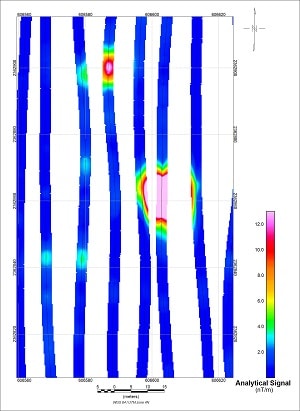Collecting and using magnetic gradient data for locating ferrous targets such as unexploded ordnance (UXO) or explosive remnants of war (ERW) in marine environments can help to save time and money while improving the overall quality of survey results.
Magnetic gradient surveys measure the rate of change of the earth’s magnetic field between two or more locations. The incremental survey cost to add multiple sensors to a single sensor survey system is very reasonable, thus creating gradient arrays with several sensors.

The technical paper on Magnetic Gradient Arrays for Marine UXO Surveys, authors Nigel Halsall, Darren Mortimer and Nick Valleau cover the benefits of array systems, which include maximizing coverage of the survey area, more reliable target or anomaly picking and improved modelling and analysis of targets.
The paper also addresses:
- Design considerations for marine UXO surveys;
- Using gradient measurements in UXO surveys;
- The impact of positional errors on interpretation; and
- Modelling of UXO targets.
Read this technical paper at the link below, to learn how you can use gradient array data to save significant time and money by increasing confidence in your geophysical interpretation and yielding more accurate target location information,




